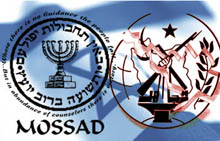[Comment by Editor: The MKO is currently mired in a desperate attempt to prevent the dismantlement of its military base, Camp Ashraf in Iraq. Israel’s open challenges to Iran’s nuclear programme are a strong indication that the MKO is no longer useful as a proxy for Israel’s intelligence services.]
intelligence services.]
Excerpt:
The anonymous Israeli intelligence officials claim, cited in the committee report, that the”blueprints”in the”alleged studies”collection matched documents his agency had gotten from its own source seems to confirm the analyst’s finding that Israeli intelligence assembled the documents.
German officials have said that the Mujahedin E Khalq (MEK), the Iranian resistance organization, brought the laptop documents collection to the attention of US intelligence, as reported by IPS in February 2008. Israeli ties with the political arm of the MEK, the National Committee of Resistance in Iran (NCRI), go back to the early 1990s and include assistance to the organization in broadcasting into Iran from Paris.
The NCRI publicly revealed the existence of the Natanz uranium-enrichment facility in August 2002. However, that and other intelligence apparently came from Israeli intelligence. The Israeli co-authors of The Nuclear Sphinx of Tehran, Yossi Melman and Meir Javeanfar, revealed that”Western”intelligence was”laundered”to hide its actual provenance by providing it to Iranian opposition groups, especially NCRI, in order to get it to the IAEA.
They cite US, British and Israeli officials as sources for the revelation.
New Yorker writer Connie Bruck wrote in a March 2006 article that an Israeli diplomat confirmed to her that Israel had found the MEK”useful”but declined to elaborate.
Read the full article:
WASHINGTON – A report on Iran’s nuclear program issued by the United States Senate Foreign Relations Committee last month generated news stories publicizing an incendiary charge that US intelligence is underestimating Iran’s progress in designing a”nuclear warhead”before the halt in nuclear weapons-related research in 2003.
That false and misleading charge from an intelligence official of a foreign country, who was not identified but was clearly Israeli, reinforces two of Israel’s key themes on Iran – that the 2007 US National Intelligence Estimate (NIE) on Iran is wrong, and that Tehran is poised to build nuclear weapons as soon as possible.
But it also provides new evidence that Israeli intelligence was the source of the collection of intelligence documents which have been used to accuse Iran of hiding nuclear weapons research.
The committee report, dated May 4, cited unnamed”foreign analysts”as claiming intelligence that Iran ended its nuclear weapons-related work in 2003 because it had mastered the design and tested components of a nuclear weapon and thus didn’t need to work on it further until it had produced enough sufficient material.
That conclusion, which implies that Iran has already decided to build nuclear weapons, contradicts both the 2007 NIE on Iran, and current intelligence analysis. The NIE concluded that Iran had ended nuclear weapons-related work in 2003 because of increased international scrutiny, and that it was”less determined to develop nuclear weapons than we have been judging since 2005″.
The report included what appears to be a spectacular revelation from”a senior allied intelligence official”that a collection of intelligence documents supposedly obtained by US intelligence in 2004 from an Iranian laptop computer included”blueprints for a nuclear warhead”.
It quotes the unnamed official as saying that the blueprints”precisely matched”similar blueprints the official’s own agency”had obtained from other sources inside Iran”.
No US or International Atomic Energy Agency (IAEA) official have ever claimed that the so-called laptop documents included designs for a”nuclear warhead”. The detailed list in a May 26, 2008, IAEA report of the contents of what have been called the”alleged studies”- intelligence documents on alleged Iranian nuclear weapons work – made no mention of any such blueprints.
In using the phrase”blueprints for a nuclear warhead”, the unnamed official was evidently seeking to conflate blueprints for the re-entry vehicle of the Iranian Shehab missile, which were among the alleged Iranian documents, with blueprints for nuclear weapons.
When New York Times reporters William J Broad and David E Sanger used the term”nuclear warhead”to refer to a re-entry vehicle in a November 13, 2005, story on the intelligence documents on the Iranian nuclear program, it brought sharp criticism from David Albright, the president of the Institute for Science and International Security.
“This distinction is not minor,”Albright observed,”and Broad should understand the differences between the two objects, particularly when the information does not contain any words such as nuclear or nuclear warhead.”
The Senate report does not identify the country for which the analyst in question works, and the Senate Foreign Relations Committee staff refused to respond to questions about the report from Inter Press Service (IPS), including the reason why the report concealed the identity of the country for which the unidentified”senior allied intelligence official”works.
Reached later in May, the author of the report, Douglas Frantz, said he was under strict instructions not to speak with the news media.
After a briefing on the report for selected news media immediately after its release, however, the Associated Press reported May 6 that interviews were conducted in Israel. Frantz was apparently forbidden by Israeli officials from revealing their national affiliation as a condition for the interviews.
Frantz, a former journalist for the Los Angeles Times, had extensive contacts with high-ranking Israeli military, intelligence and Foreign Ministry officials before joining the Senate Foreign Relations Committee staff. He and co-author Catherine Collins conducted interviews with those Israeli officials for The Nuclear Jihadist, published in 2007. The interviews were all conducted under rules prohibiting disclosure of their identities, according to the book.
The unnamed Israeli intelligence officer’s statement that the”blueprints for a nuclear warhead”- meaning specifications for a missile re-entry vehicle – were identical to”designs his agency had obtained from other sources in Iran”suggests that the documents collection which the IAEA has called”alleged studies”actually originated in Israel.
A US-based nuclear weapons analyst who has followed the”alleged studies”intelligence documents closely says he understands that the documents obtained by US intelligence in 2004 were not originally stored on the laptop on which they were located when they were brought in by an unidentified Iranian source, as US officials have claimed to US journalists.
The analyst, who insists on not being identified, says the documents were collected by an intelligence network and then assembled on a single laptop.
The anonymous Israeli intelligence official’s claim, cited in the committee report, that the”blueprints”in the”alleged studies”collection matched documents his agency had gotten from its own source seems to confirm the analyst’s finding that Israeli intelligence assembled the documents.
German officials have said that the Mujahedin E Khalq (MEK), the Iranian resistance organization, brought the laptop documents collection to the attention of US intelligence, as reported by IPS in February 2008. Israeli ties with the political arm of the MEK, the National Committee of Resistance in Iran (NCRI), go back to the early 1990s and include assistance to the organization in broadcasting into Iran from Paris.
The NCRI publicly revealed the existence of the Natanz uranium-enrichment facility in August 2002. However, that and other intelligence apparently came from Israeli intelligence. The Israeli co-authors of The Nuclear Sphinx of Tehran, Yossi Melman and Meir Javeanfar, revealed that”Western”intelligence was”laundered”to hide its actual provenance by providing it to Iranian opposition groups, especially NCRI, in order to get it to the IAEA.
They cite US, British and Israeli officials as sources for the revelation.
New Yorker writer Connie Bruck wrote in a March 2006 article that an Israeli diplomat confirmed to her that Israel had found the MEK”useful”but declined to elaborate.
Israeli intelligence is also known to have been actively seeking to use alleged Iranian documents to prove that Iran had an active nuclear weapons program just at the time the intelligence documents which eventually surfaced in 2004 would have been put together.
The most revealing glimpse of Israeli use of such documents to influence international opinion on Iran’s nuclear program comes from the book by Frantz and Collins. They report that Israel’s international intelligence agency Mossad created a special unit in the summer of 2003 to carry out a campaign to provide secret briefings on the Iranian nuclear program, which sometimes included”documents from inside Iran and elsewhere”.
The”alleged studies”collection of documents has never been verified as genuine by either the IAEA or by intelligence analysts. The Senate report said senior United Nations officials and foreign intelligence officials who had seen”many of the documents”in the collection of alleged Iranian military documents had told committee staff”it is impossible to rule out an elaborate intelligence ruse”.
Gareth Porter is an investigative historian and journalist specializing in US national security policy. The paperback edition of his latest book, Perils of Dominance: Imbalance of Power and the Road to War in Vietnam, was published in 2006.
(Inter Press Service)
By Gareth Porter



